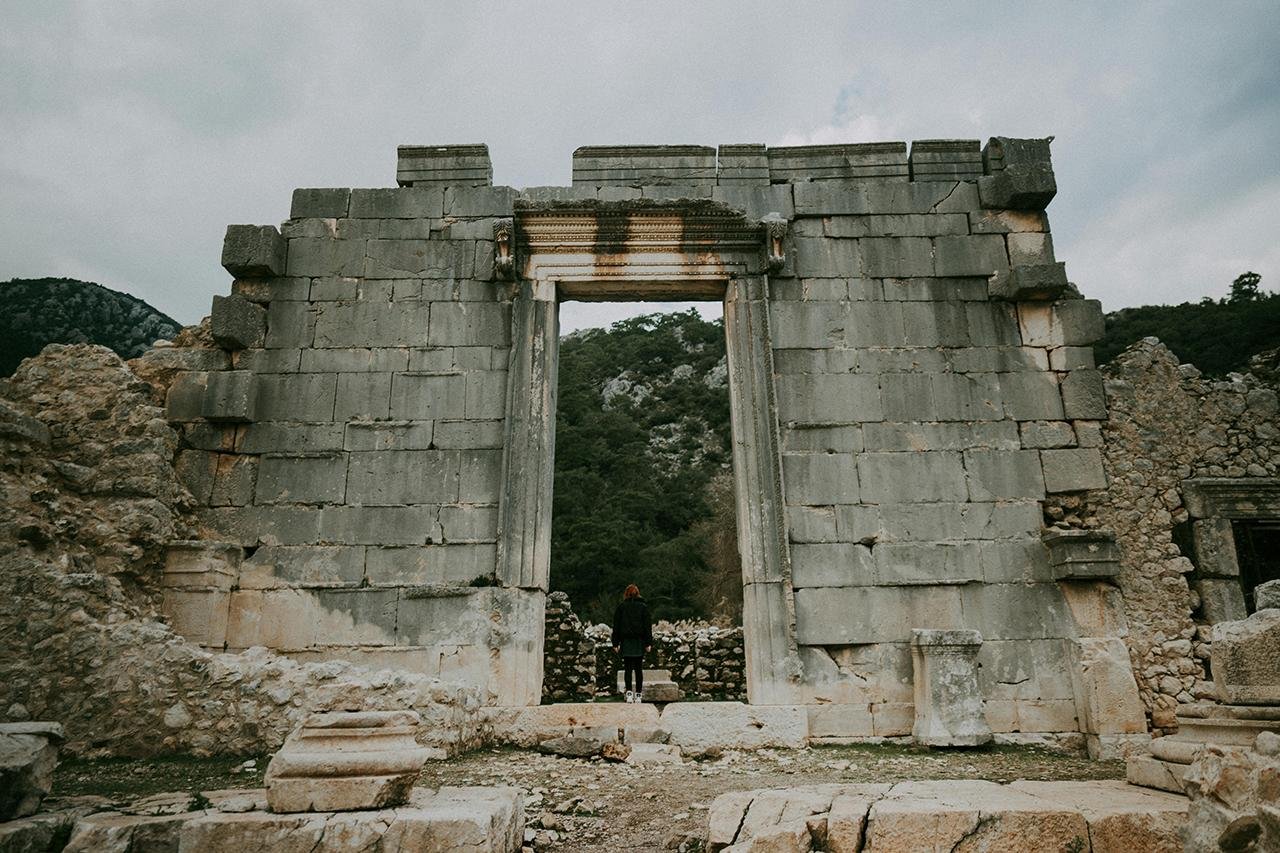Archaeologists who have been working at the ancient city of Olympos in the southern Antalya province of Turkey have discovered beautifully preserved mosaics and an inscription at the entrance of a fifth-century church. The excavation, supported by Turkey’s Ministry of Culture and Tourism, has been a year-round activity for the past four years and continues to uncover significant finds from the Hellenistic, Roman, and Byzantine eras.
 Ruins of the City of Olympos, Antalya, Turkey. Credit: Onur Kaya
Ruins of the City of Olympos, Antalya, Turkey. Credit: Onur Kaya
The discovery took place at Church No. 1, where a sensational mosaic inscription was found just in front of the main entrance. It reads: “Only those on the right path may enter here,” an absolute spiritual dictate that was meant to guide early Christian worshippers. The mosaic, and others found in the main and side sections of the church, features elaborate geometric and botanical motifs with inscriptions dedicating the patrons who financed the construction.
Beyond the church, excavations also revealed a fifth-century multi-roomed residential complex built on top of an ancient Roman necropolis. The building, which was destroyed by fire in the sixth century, was rebuilt afterward with most of its original design, including its stone-paved floors. This transformation of burial grounds into living spaces reflects a shift in urban planning during the Byzantine period, believed to have been caused by population growth.
Among the civilian structures, the team also unearthed a large pithos, or a storage vessel made of clay, which is currently housed at the Antalya Archaeology Museum. This find provides additional insight into the story of everyday life in ancient Olympos, with aspects of domestic and storage use from that time.
 The ruins of the 2nd century Roman theatre with Mount Olympos (Tahtalı Dağı) in the background, Phaselis, Lycia, Turkey. Credit: Carole Raddato / CC BY-SA 2.0
The ruins of the 2nd century Roman theatre with Mount Olympos (Tahtalı Dağı) in the background, Phaselis, Lycia, Turkey. Credit: Carole Raddato / CC BY-SA 2.0
In the coming days, the team is going to investigate a possible monumental temple in the center of the city. Architectural elements such as bossage masonry and clean-cut blocks of stone point toward the presence of a grand religious structure.
The broader 2025 excavation project includes current work in the western necropolis, Bishop’s Palace, Church No. 3, and this newly found temple area. The archaeologists hope to complete the project in the north of the city over the next two years and then focus on Olympos’s southern region.
The discoveries at Olympos yield significant insights regarding religion, urban development, and daily life in the Lycian region during the Byzantine era.
You can view original pH๏τos of the finds by clicking here





